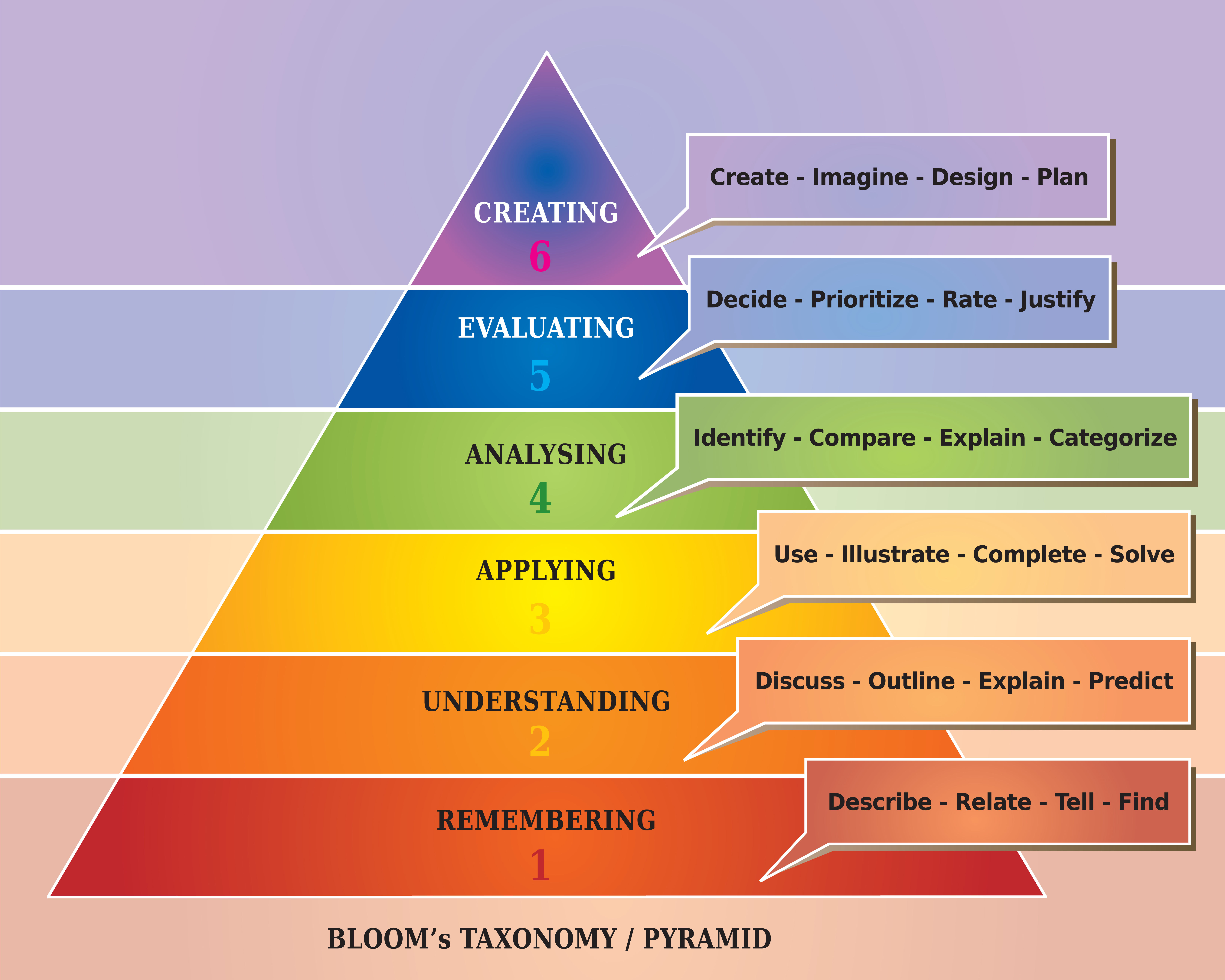You may have noticed that you are now expected to do more than memorize information. You are expected to think and process material at higher levels. If you are left feeling that there is simply too much information to cover, you may want to think about how you are learning information.
While high school testing primarily asked you to remember and understand information, often college testing asks you to understand, apply, analyze, and evaluate it. In order to test well at higher levels, you need to study at these higher levels.

Bloom's Taxonomy depicts the different levels of thinking we use when learning. Each level builds on the foundation that precedes it. While memorization is still important, learning is now much more than memorization.
Use what you know about levels of learning to prepare for tests by thinking about what sorts of questions you expect on an exam and creating questions at each of those levels to study. After an exam, go through your returned exam and identify the level of learning for each question. Use this practice to study more strategically for your next exam.
|
Bloom’s Level |
Definition |
Learning Outcome |
Example |
Test Question Key Words |
|
Remembering |
To retrieve, recognize, and recall knowledge about concepts.
|
Students can reproduce information that they have memorized verbatim. |
I recalled a definition, concept, formula, or fact with no additional resources. |
|
|
Understanding |
To explain and provide rationale to support concepts and principles. |
Students can explain concepts in their own words.
|
I explained a concept to my 8 year old niece and 80 year old grandmother.
|
|
|
Applying |
To transfer concepts and principles to different problems or scenarios. |
Students can use knowledge to complete or solve an abstract or real-life problem or task with minimal direction. |
I used the information learned to solve a problem I had never seen before. |
|
|
Analyzing |
To break material into constituent parts, determining how parts relate to one another and to an overall structure. |
Students can discern patterns, differences, and similarities within information and can distinguish processes, functions, methods, outcomes, etc. |
I distinguished principles from seemingly identical principles, explained the historical origins, and elaborated on differences. |
|
|
Evaluating |
To make judgments about information previously analyzed and the validity of ideas based on a set of criteria. |
Students can look at different processes and determine which is likelier to be desirable. |
I determined the best plan given the information provided.
|
|
|
Creating |
To construct new information or present new meaning from existing information. |
Students can generate their own thoughts and interpretations based upon thorough analysis and evaluation. |
I came up with my own ideas and designed my own process to solve a problem.
|
|
Geddes, Leonard. "Tools." The LearnWell Projects. Accessed July 14, 2016. http://www.thelearnwellprojects.com/tools/. Used with permission.
McGuire, Saundra Yancy, and Stephanie McGuire. Teach Students How to Learn: Strategies You Can Incorporate into Any Course to Improve Student Metacognition, Study Skills, and Motivation.Sterling: Stylus, 2015. 34-35.